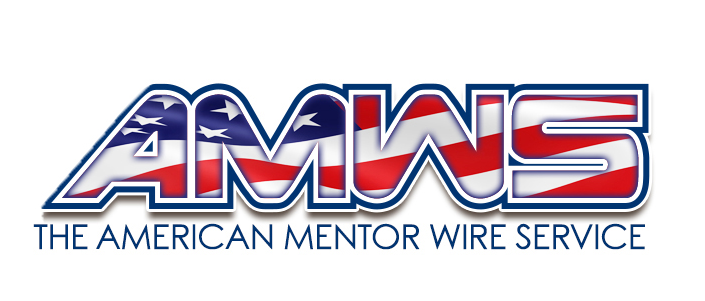AMWS, -- One report, conducted by the Annie E. Casey Foundation and published annually through the Family Connections Partnership, ranked Georgia 44th in the nation in the well-being of its children. The old separation of church and state mindset may have contributed significantly to Georgia’s demonstrated care for kids. It may now offer a starting point for defining a New Georgia.
The Georgia Department of Human Resources, Office of Faith-based and Community Initiatives and the Division of Family and Children Services are looking beyond the concept of American Idol-making and into a common vision for positive youth development. THE ANNUAL YOUTH ACHIEVEMENT AWARDS provides an alternative venue for defining “winners” based on a belief or assertion that“I can achieve.”
A movement from passive disagreement to passionate proactive collaboration calls for activism beyond the sanctity of traditional religious and government barriers. Our friends share a common passion for holistic youth development, but do not always trust methods or even definitions of wholeness. Some are finding possibilities through a secular process designed to build capacity from an individual’s vision of his or her future.
Youth serving agencies generally agree with faith leaders that more can be done to increase the peace for at-risk youth. Families hurting from loved ones lost to murder, drunk driving, and other such threats might also see the need for increased peace rather than increased policing.
In its proposed partnership with the state government, Youth Achievers USA Institute underscored a need for matching holistic needs of youth to diverse community resources. One of the most consistently missing pieces in state development strategies has been administering spiritual growth as a component of holistic development.
Faith-based and community leaders throughout Georgia have been invited to increase the peace for youth in their local communities. An annual deadline provides leaders with a chance to assess local needs and qualify for capacity building mini-grants that may be offered through state or charitable programs. Pre-funding activity offers youth development tools at no cost to the church or the state.
Some national leaders believe that helping America’s youth means defining the problem, assembling the resources and minimizing the barriers in between. Youth development is an approach that focuses on young people’s strengths rather than their weaknesses. Many adults tend to view youth as “problems” to be solved, rather than as assets who can contribute much to their communities.
The term“youth development” often refers to a specific approach to working with young people in which youth are actively engaged in their own development and are positively involved in their communities. Community organizations and programs that use this approach create environments in which young people thrive. A review of 10 evaluated mentoring programs concluded that one-on-one mentoring programs can enhance positive youth development: mentored youth have shown evidence of significant reductions in school absence; higher college participation; better school attitudes and behavior; less drug and alcohol use especially among minority youth; less likelihood of hitting others; less likelihood of committing crimes; more positive attitudes toward their elders and toward helping; and improved parental relationships and support from peers.
According to The White House, there are eight important features that justify The Annual Youth Achievement Awards as a key resource for positive youth development. Programs with these features can help young people develop important assets, such as good health habits, success in school, and attachment to positive influences such as schools, religious organizations, and community-based youth programs. These important features of programs include:
x Promoting a sense of safety – The Annual Youth Achievement Awards builds capacity around participating youth ages 7-24. The overarching goal is to increase the peace for a whole village of 20 caring adults.
x Providing appropriate structure—The Annual Youth Achievement Awards promotes a circular vs linear organizational structure. This structure allows for the assets of the whole village to be directed to the goals of a participating youth.
x Creating supportive relationships –Each completed application to The Annual Youth Achievement Awards establishes a one-to-one relationship between a participating youth age 7-24. The process supports the youth and mentor in developing a core group of advisors each supporting one of seven key areas of holistic development.
x Providing opportunities to belong – Each completed application to The Annual Youth Achievement Awards produces a winner with all rights and responsibilities. Youth Achievers collectively distinguishes an exclusive group of leaders based on their individual and collective vision of the future.
x Providing positive social norms, such as rules for behavior– Goals for a Youth Achiever represent value or ”Money-n-the-Bank.” The rules likewise promote positive and measurable youth development using similar methods to Wall Street’s valuing of commodities. Afterall, children are a nation’s most valued asset.
x Giving youth responsibilities and meaningful challenges -- “I believe I can achieve whatever I believe I can achieve.” It’s more than a theme song. It’s a measure for unlimited growth. Any winner who believes can also achieve.
x Providing opportunities for skill building— The Annual Youth Achievement Awards generates free webspace for each winner with standard links for skill building, scholarships and opportunities to promote local programs.
x Coordinating family, school, and community programming.—The Whole Village, in cooperation with a local church, mosque or synagogue promotes a community of faith and a proven foundation for anchoring family, school and community programs.
Positive youth development is an ongoing and intentional process. Young people need supports such as acceptance, high expectations, affection, and warmth. They also need opportunities to explore, create, contribute, and belong. Finally, they need relationships with parents, relatives, teachers, coaches, and other caring adults.











